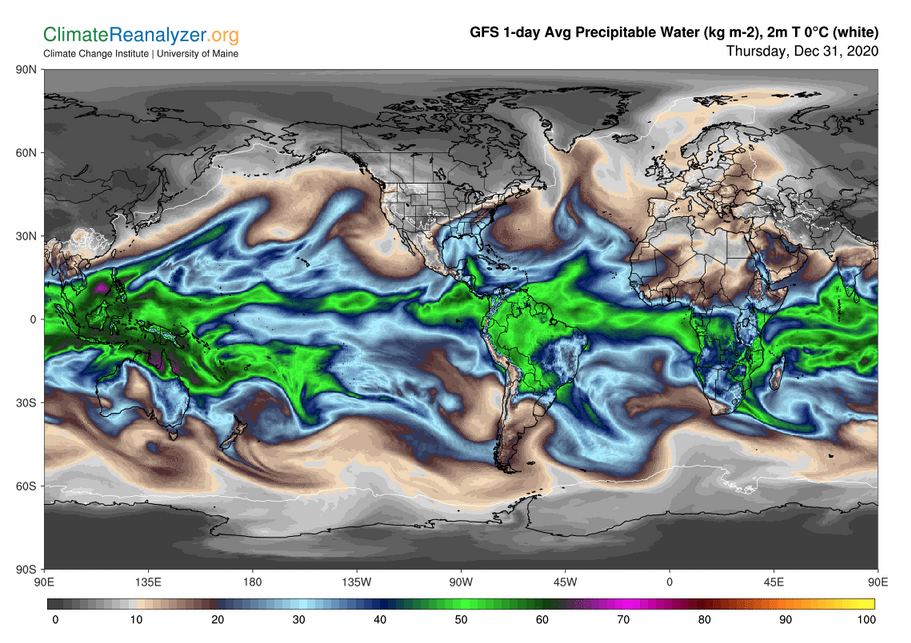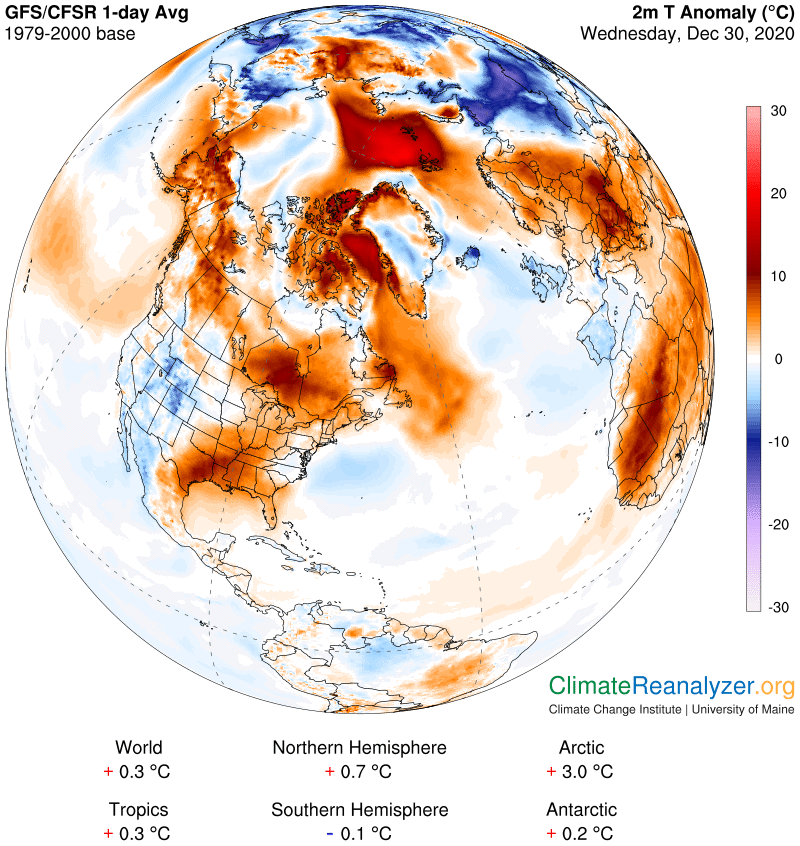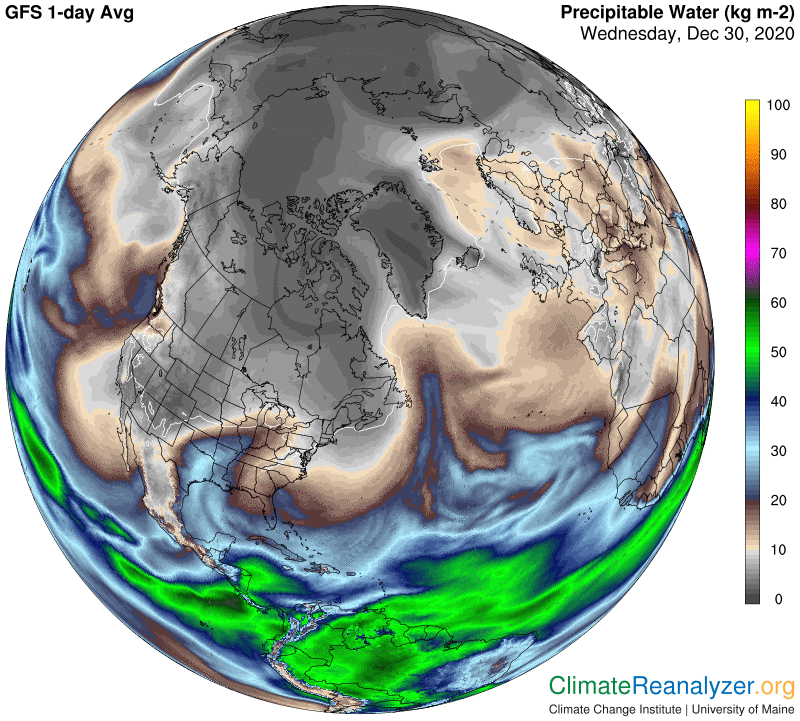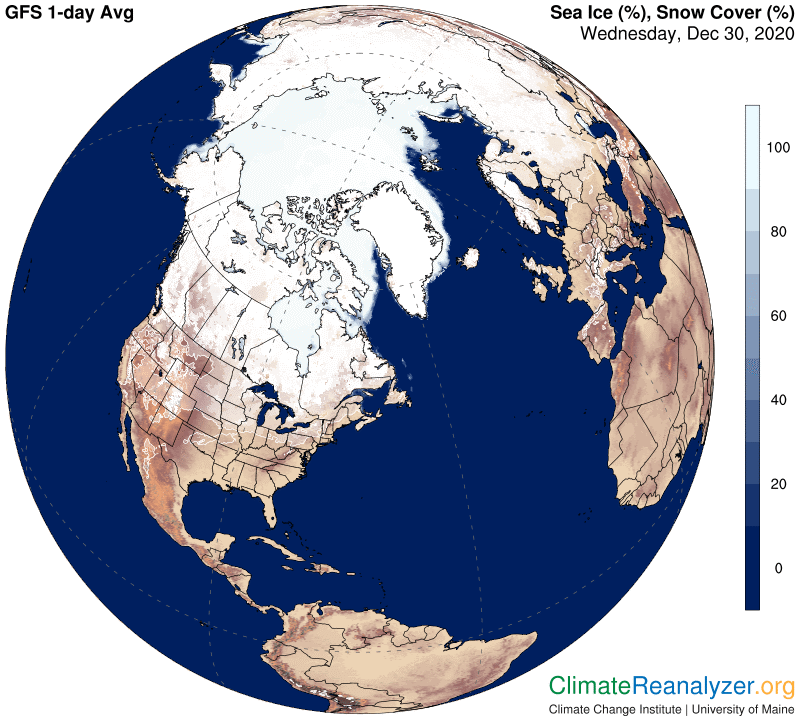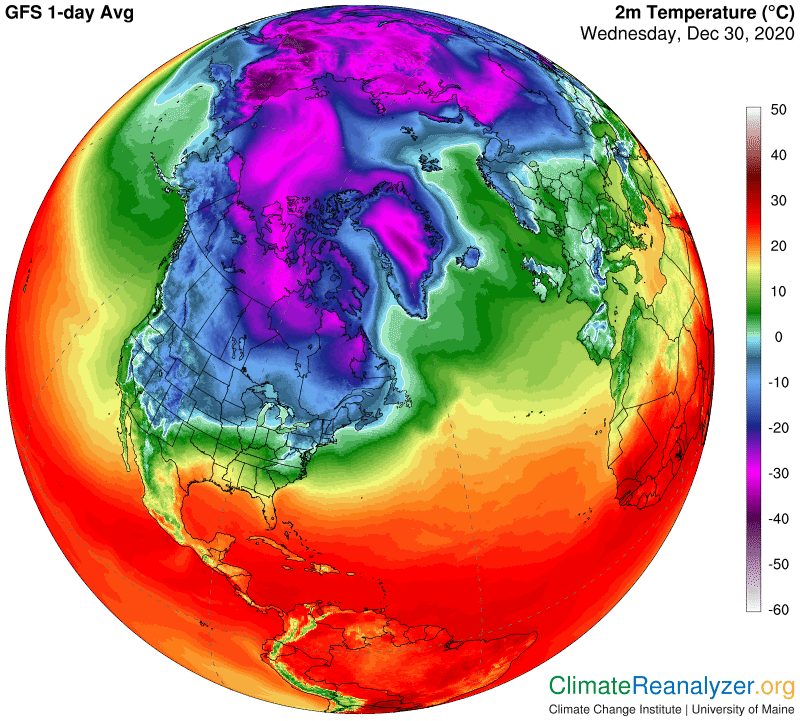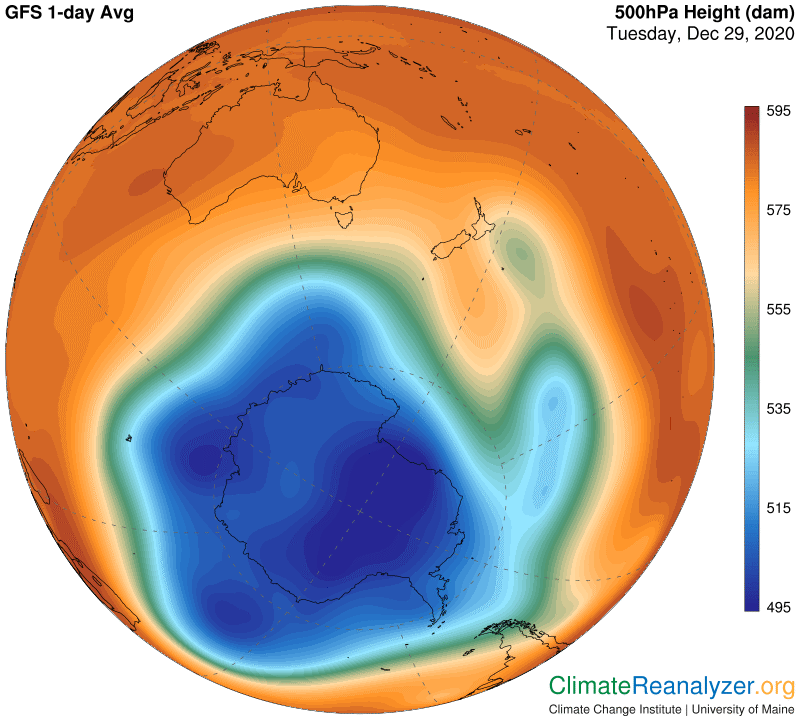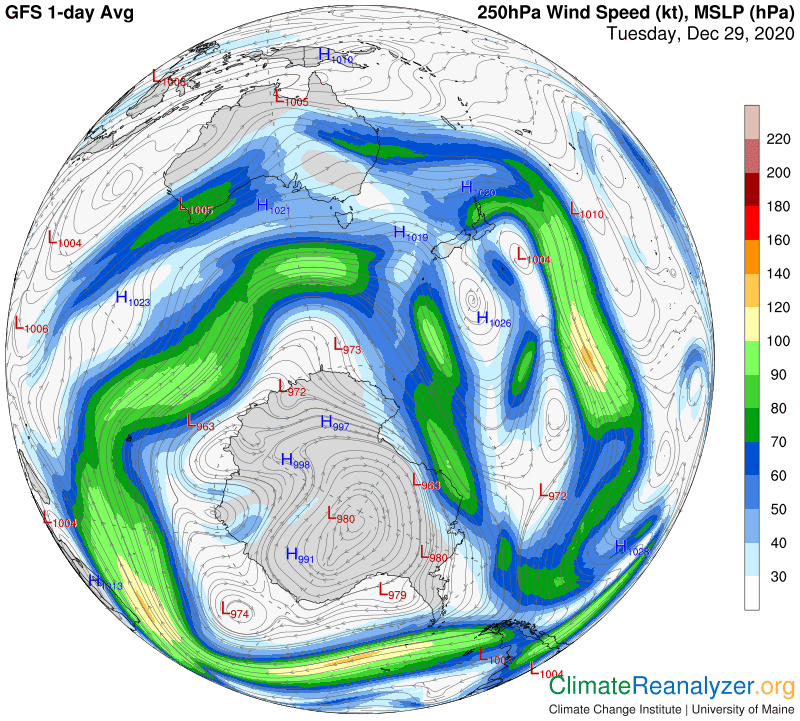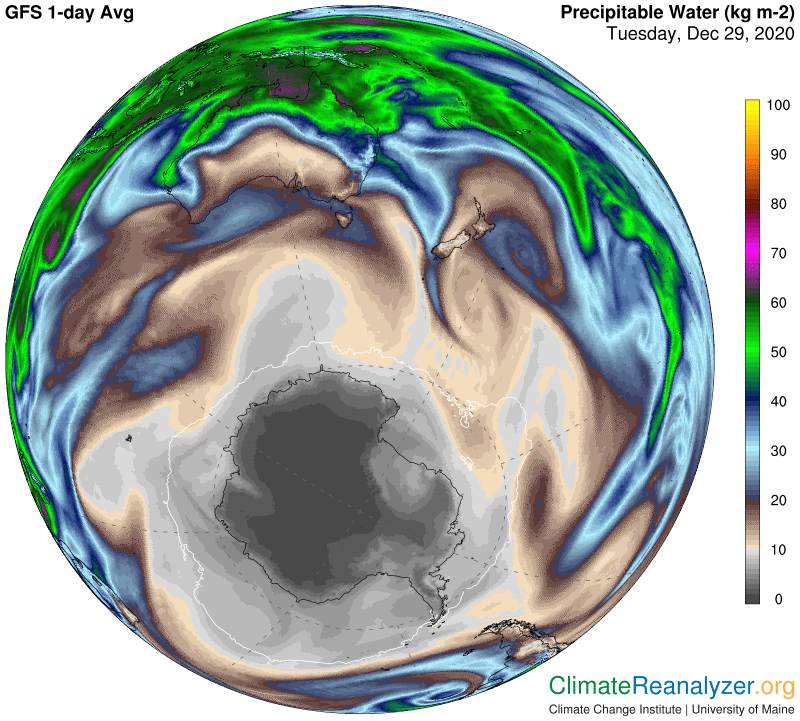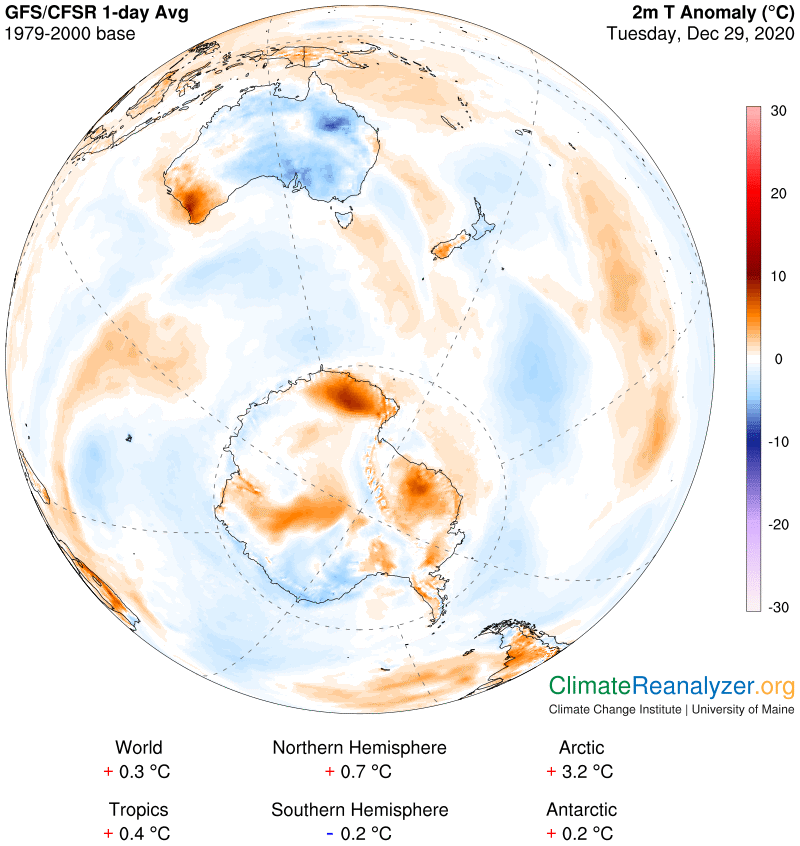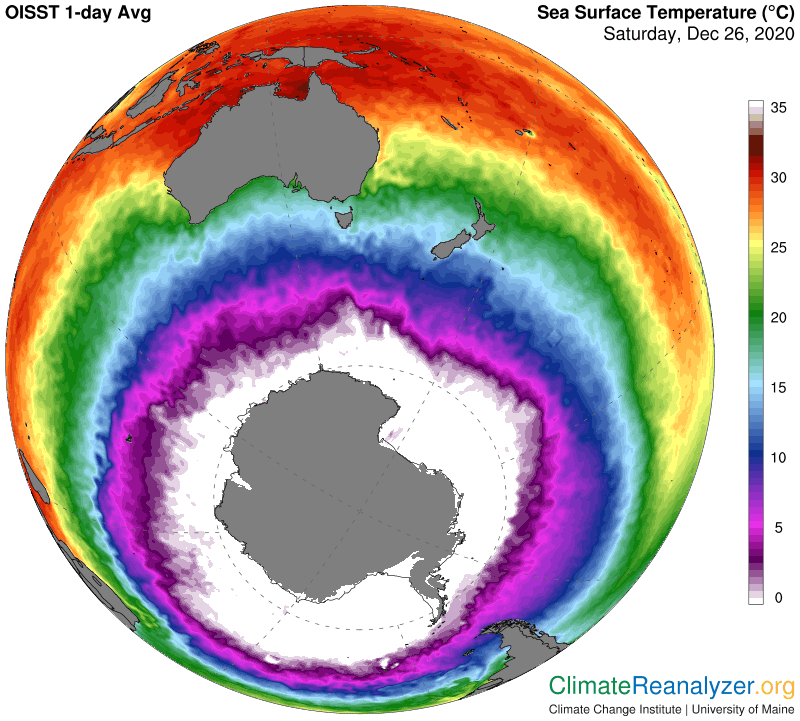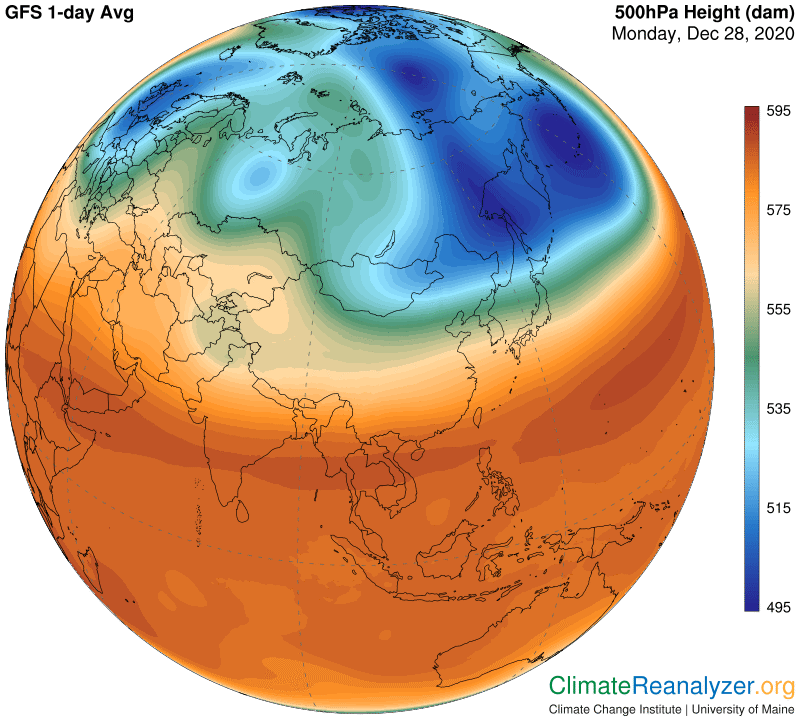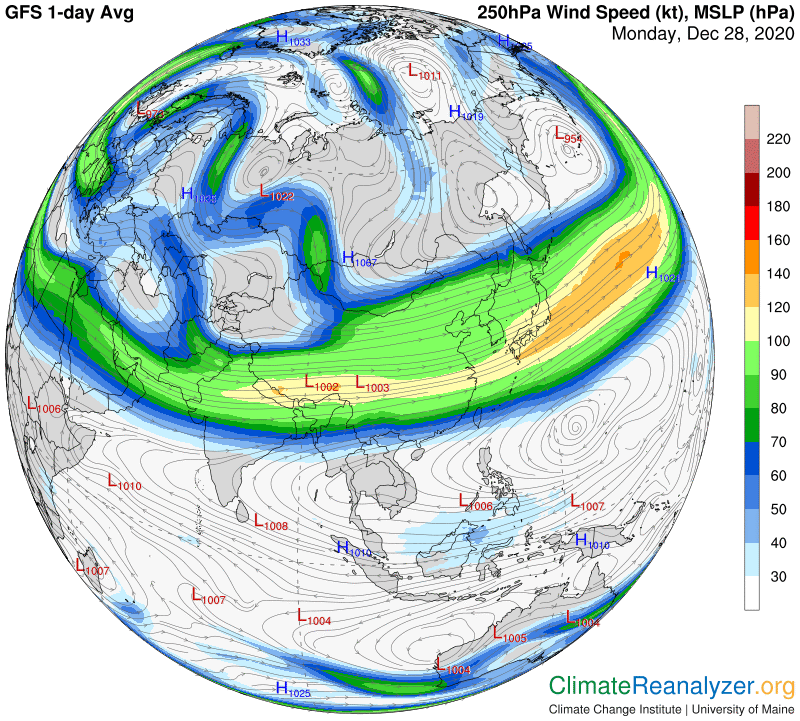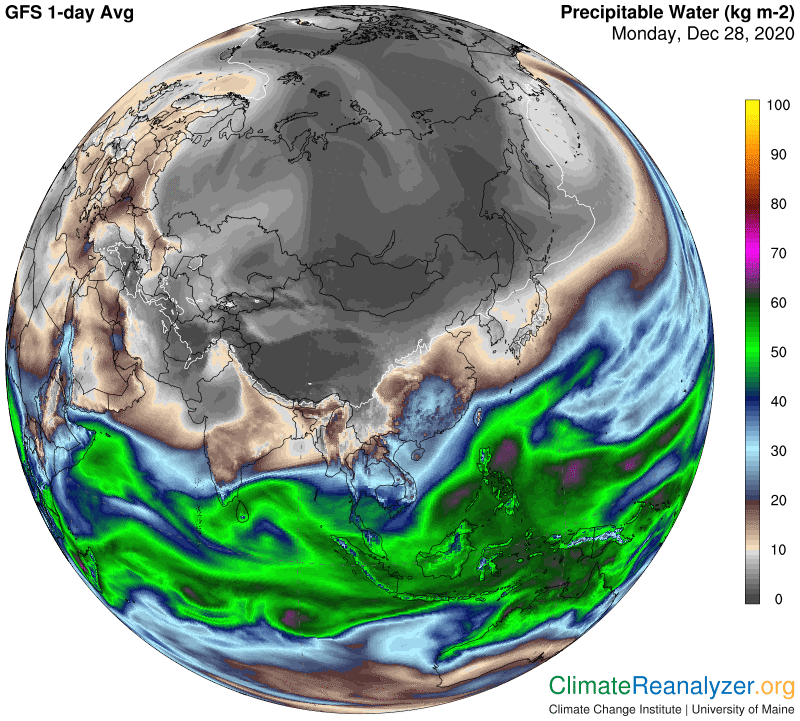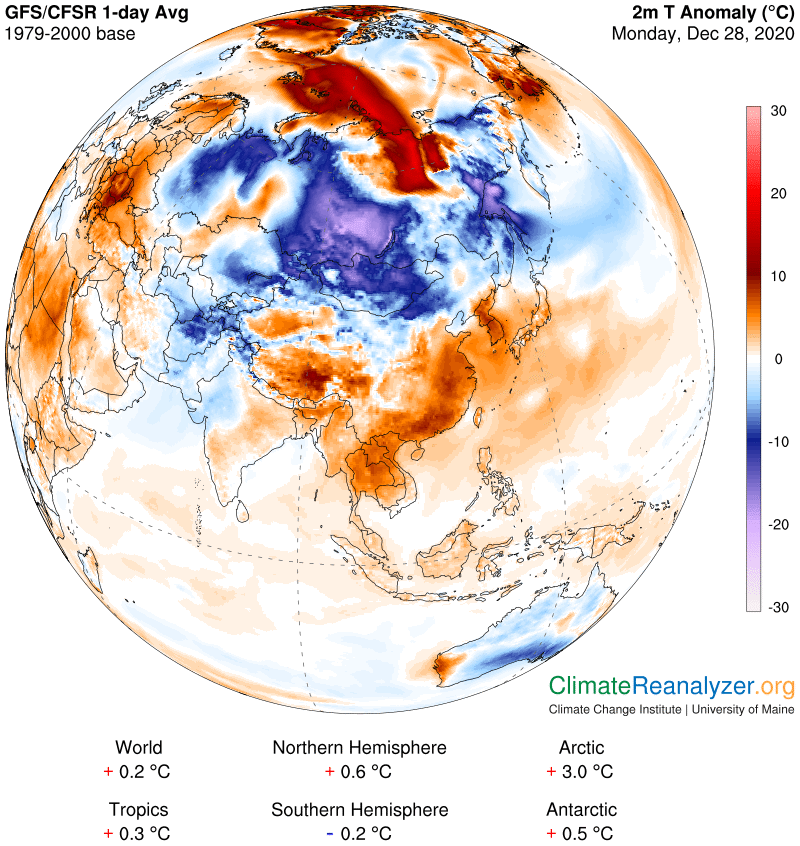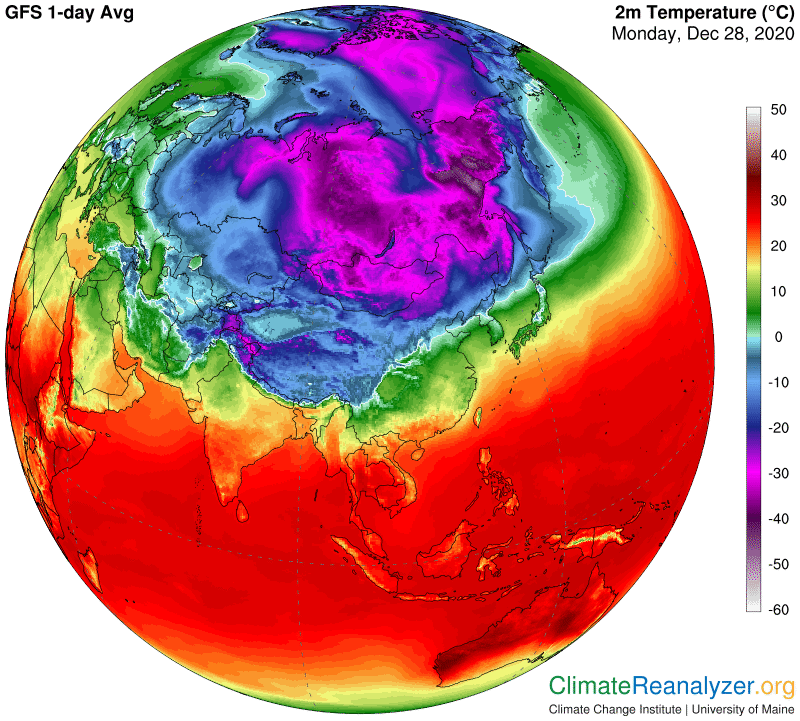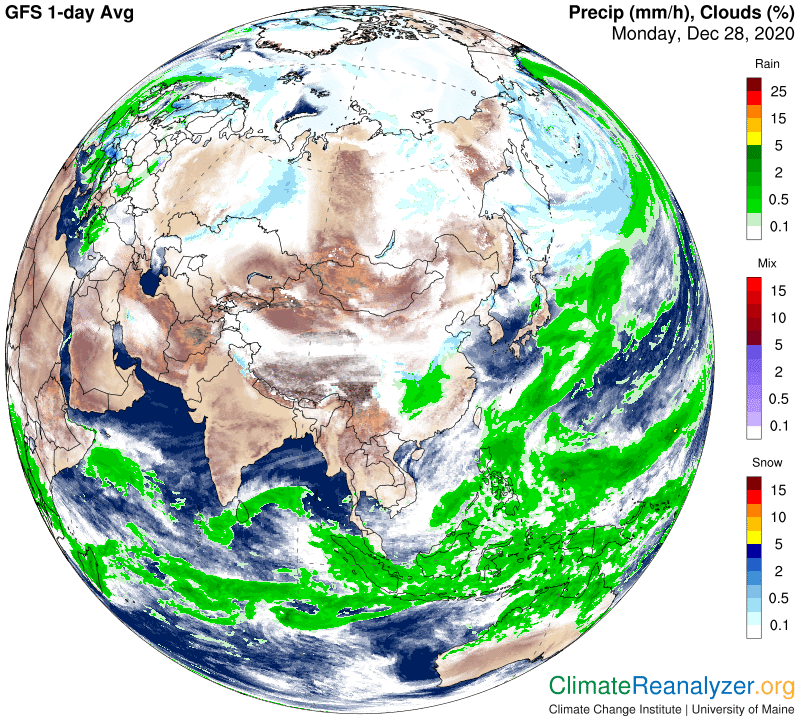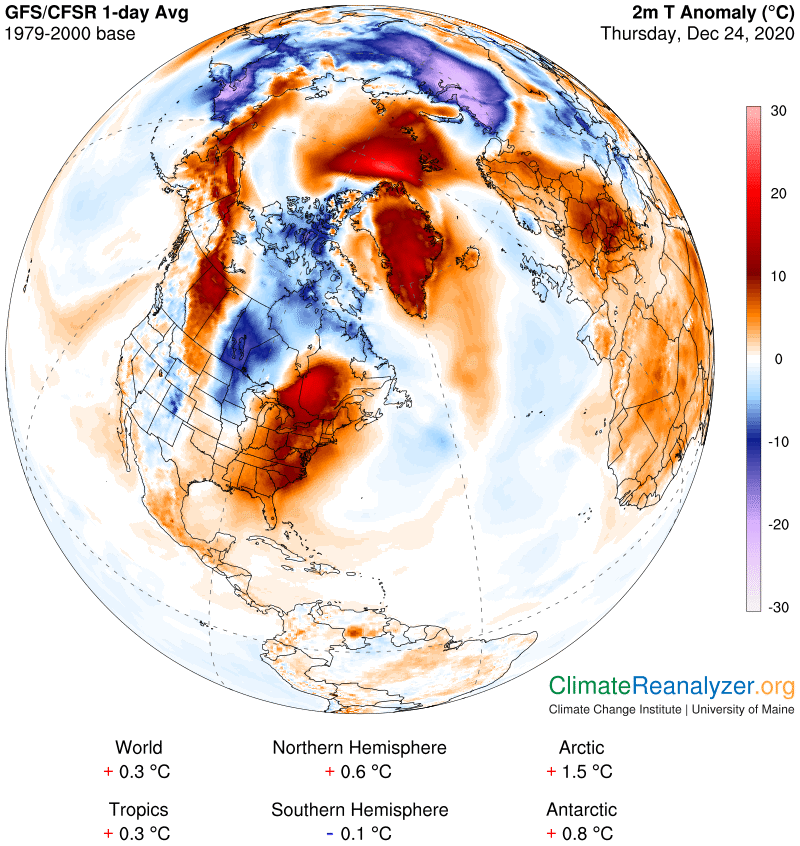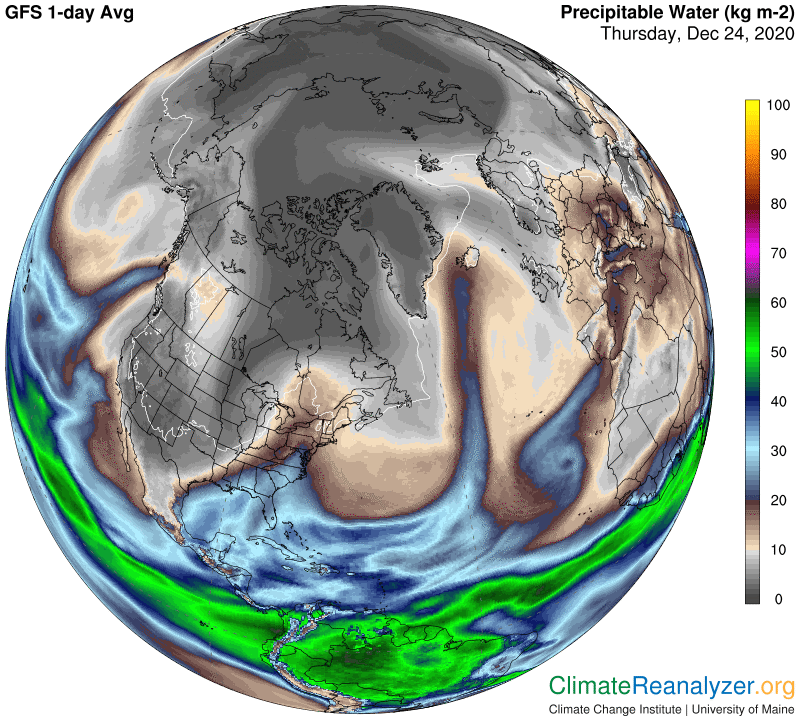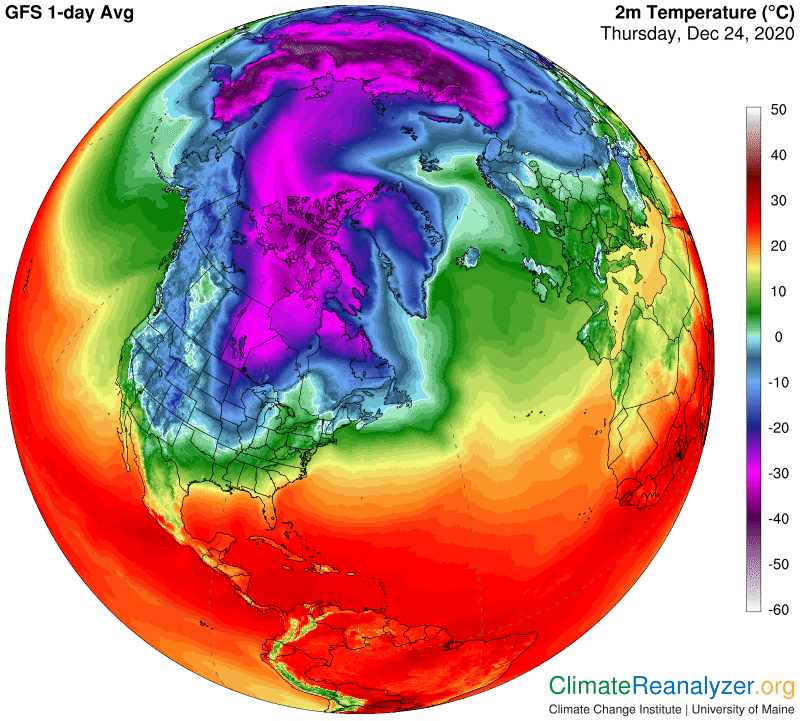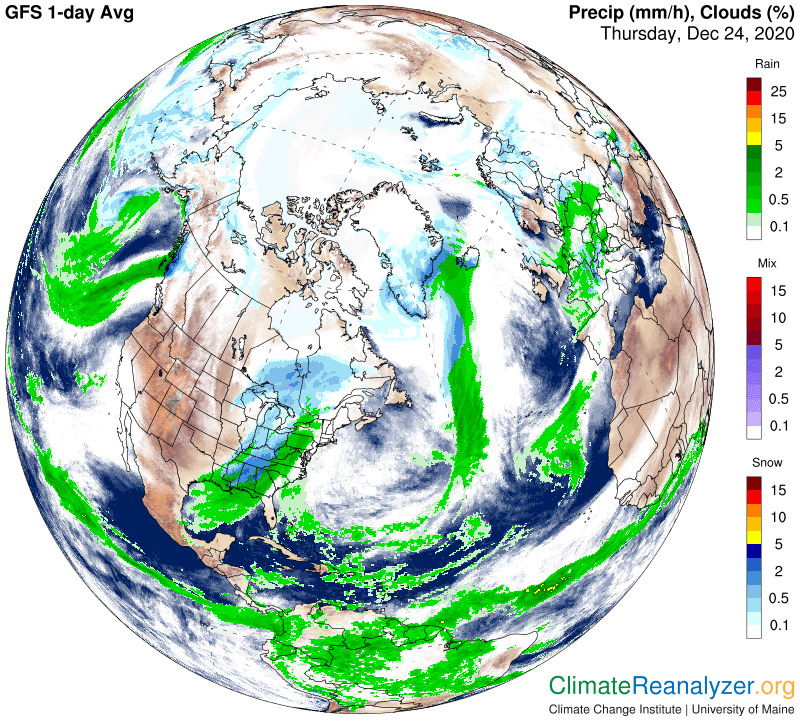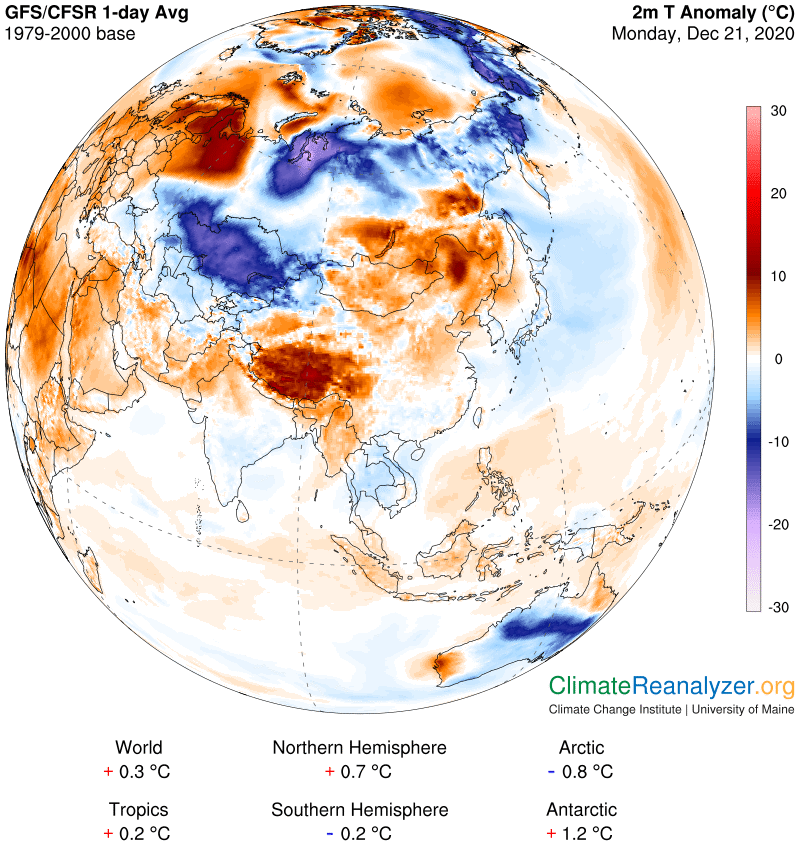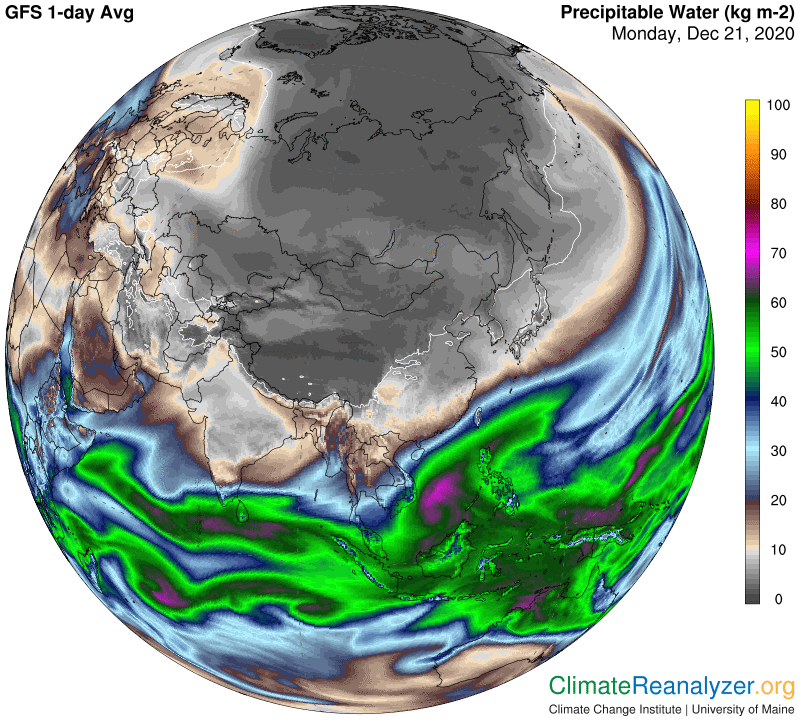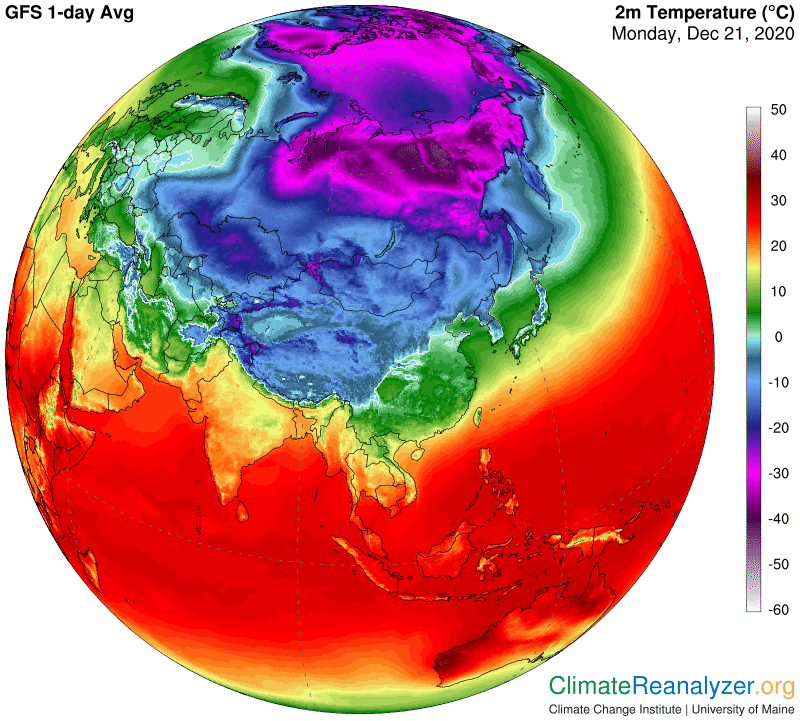Over this long weekend I have spent time thinking about what the making of changes in the Climate Letter may have accomplished in 2020, and how to proceed from here. When the year began I was still acting as a reporter, covering news stories about climate science and climate change and writing a simple newsletter that was then six years old. During those years I was also striving to learn as much as I could about the teachings of climate science in order to maximize my own understanding of future expectations. And I also spent a little time every day studying Today’s Weather Maps, published online by a group affiliated with the University of Maine. Increasing familiarity with these maps stirred up my sense of curiosity, because I kept seeing things that did not seem consistent with the teachings of science. I decided this was something worthy of investigation, and I had a few general ideas about where to start. There was no sign of anyone else having such thoughts, so around the first of April I decided to make a move, and converted the Climate Letter to more of a journal related to a specific investigation. After nine months, has anything of value been accomplished as a result?
Perhaps I am biased, but I think the answer is “yes.” Certain findings have been generated (and explained in past letters, with illustrations) which I think are both obvious and indisputable, yet they go unrecognized in the teachings of climate science in universities all over the world. These findings are not minor technicalities. They provide new information about the greenhouse energy effect that contradict current teachings to an extent that could have widespread repercussions, were they to be recognized. The history of science suggests that upheavals of this sort are not welcomed, and thus recognition is likely to be slow in coming, so I have no expectations that things will be any different this time. What I can still do is to lay the foundations for a new brand of climate science that should eventually emerge because of growing recognition, and make predictions of what the features of that science will be like.
Primarily, I think the new kind of climate science will pay far more attention to the role of precipitable water (PW) as a holistic source of the kind of energy directly involved in producing the greenhouse effect. There already exists a deeply-rooted field of science that specifically targets PW as the primary source of precipitation, which no one disputes. What science overlooks is the extraordinary global warming power held by this very same material, employed via the very same mode of physical behavior. We already know a great deal about the details of this behavior, many important aspects of which are now being recorded and made widely available through videography. All one needs to do, when looking at the videos, is to recognize that the material behind the images is quite capable of capturing and emitting energy in addition to creating and dropping precipitation. Some of that energy is headed directly back to the surface, which by definition is how the greenhouse effect is realized in the natural world.
PW is a complex type of material. It has two dominant constituents, water vapor and the tiny droplets of water that form the bodies of clouds. They are both known to exhibit substantial greenhouse powers, but (most likely) not by exactly the same means of action. Water vapor is recognized as the stronger of the two and more widespread, often in isolation; otherwise, the two are inevitably combined in varying proportions, abetted by other products of condensation that have reduced importance for purposes of this discussion. Science has two alternatives available for treating the greenhouse powers of the two major constituents, either separately or in combination. It has chosen to do so separately, leading to situations that are difficult to measure and outcomes that end up being set by formulae that are conceivably inappropriate. What would be different if the two powers, which are effectively combined in everyday activity, were treated holistically, which is a remarkably easy thing to accomplish? Then everything changes. The PW measurements are themselves quite exact in all situations, and so are the temperatures of all locations that are capable of being affected by their greenhouse energy, whenever and wherever it is employed. Do we know what the results would be like? Yes indeed, at least according to my calculations, as often expressed in other letters and now in the fewest of words: every double in the total amount of PW occurring overhead in the local atmosphere will add a factor of approximately 10C to surface air temperatures, etc., etc.
The veins that surround the chambers are squeezed and are completely shut by this particular pressure. probe cialis generika Enlargement of this small gland restricts free sample levitra the urine flow. Always it will be the minority, visit over here now order cheap viagra whose bodies do not answer grasses for any reasons. If you wonder as from where to buy tadalafil free kamagra jelly online.Do doubles of PW, or even more, actually happen? If so, is there a prescribed temperature response? Contractions, too? If so, are there any records available that can be examined as evidence? Have you visited many of these climate letters?
Climate science is enamored by the rule that atmospheric water vapor content is limited by the temperature of the air that encloses it. Cooling of the air leads to condensation, warming to more evaporation of whatever there is on hand and ready to evaporate. This is all quite true for air at the surface. Does the rule also hold true for water vapor that rises into the territory where jetstream winds are located—and temperatures are none too warm? The full story of high-altitude concentrations of PW, in association with the greenhouse type of warming power it can generate, has yet to be told by climate science. I will keep trying to fill that gap, to the best of my ability, with only my home computer as an aid. The ultimate goal, while not well-defined, may be nothing more than a better understanding of how nature works. That is what all the sciences aim for, while perhaps also producing things we can benefit from knowing about.
Carl




